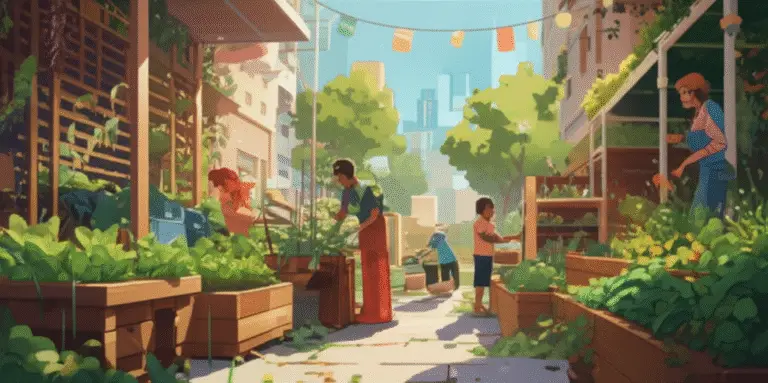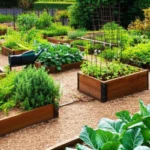Support our educational content for free when you purchase through links on our site. Learn more
Imagine turning a neglected urban lot into a buzzing oasis of fresh veggies, vibrant flowers, and smiling neighbors. That’s the magic of a community garden project! Whether you’re dreaming of a neighborhood food hub, a green classroom, or simply a place to connect with nature and each other, this guide has you covered. We’ll walk you through everything—from picking the perfect spot and choosing crops, to rallying volunteers and navigating legal hurdles. Plus, we’ll share insider secrets from our Community Gardening™ team that turn good intentions into thriving gardens.
Did you know community gardens can actually lower neighborhood crime rates and boost property values? 🌍 But how do you turn that potential into reality? Stick with us, and by the end, you’ll be ready to cultivate not just plants, but community spirit that lasts for years.
Key Takeaways
- Choose the right location with ample sunlight, water access, and safe soil to set your garden up for success.
- Build a passionate core team and engage your community early to foster ownership and enthusiasm.
- Follow 10 essential organizing steps including securing land, creating bylaws, and fundraising.
- Select crops wisely based on climate, community preferences, and ease of care.
- Embrace sustainable practices like drip irrigation, composting, and crop rotation to keep your garden thriving.
- Use trusted tools and brands such as Fiskars trowels and Felco pruning shears for durability and comfort.
- Host creative events and workshops to boost participation and strengthen community bonds.
- Navigate permits and legalities proactively to avoid delays and complications.
- Track your garden’s impact with clear metrics and celebrate milestones to keep momentum alive.
👉 Shop trusted community gardening tools and gear:
Table of Contents
- ⚡️ Quick Tips and Facts for Starting Your Community Garden Project
- 🌱 The Roots of Community Gardens: History and Evolution
- 🏡 Choosing the Perfect Location for Your Community Garden
- 🛠️ 10 Essential Steps to Organize a Thriving Community Garden Project
- 🌿 Selecting Plants and Crops: What Grows Best in Community Gardens?
- 🤝 Building Community Engagement and Volunteer Support
- 💧 Sustainable Gardening Practices: Watering, Composting, and Soil Health
- 🔧 Tools, Resources, and Brands We Trust for Community Gardening
- 📅 Planning Your Garden Calendar: Seasonal Tips and Maintenance
- 💡 Creative Ideas to Make Your Community Garden Stand Out
- ⚖️ Navigating Legalities, Permits, and Local Regulations
- 📈 Measuring Success: How to Track and Celebrate Your Garden’s Impact
- 🌍 Community Gardens and Urban Food Justice: Making a Difference
- 🧰 Troubleshooting Common Challenges in Community Garden Projects
- 🎉 Hosting Events and Workshops to Boost Garden Participation
- 📚 Recommended Books, Websites, and Organizations for Gardeners
- 🔍 FAQ: Your Burning Questions About Community Garden Projects Answered
- 🏁 Conclusion: Growing Together for a Greener Tomorrow
- 🔗 Recommended Links to Kickstart Your Community Garden Journey
- 📖 Reference Links and Further Reading
⚡️ Quick Tips and Facts for Starting Your Community Garden Project
Welcome to the green revolution! 🌿 Starting a community garden project is like planting a seed that grows into a vibrant hub of friendship, fresh food, and neighborhood pride. At Community Gardening™, we’ve seen firsthand how these projects transform spaces and lives — and we’re here to share the essentials to get you growing.
Quick Tips to Kickstart Your Garden 🌱
- Location is everything: Aim for a spot with at least 6 hours of sunlight daily, clean water access, and safe soil.
- Build a committed team: 3-5 passionate people can get the ball rolling and keep it rolling.
- Engage your community early: Host meetings, invite neighbors, and listen to their ideas.
- Plan for sustainability: Think water conservation, composting, and organic practices from the start.
- Set clear rules and roles: Bylaws and agreements prevent confusion and keep everyone on the same page.
- Start small, dream big: Begin with manageable plots and expand as enthusiasm grows.
- Celebrate often: Events, harvest parties, and workshops keep spirits high and hands busy.
Fascinating Facts 🌍
| Fact | Insight |
|---|---|
| Community gardens reduce crime | Studies show gardens can lower neighborhood crime rates by fostering community ownership (source) |
| Boosts property values | Nearby property values can increase due to improved neighborhood aesthetics (source) |
| Health benefits | Gardeners report better mental health and increased physical activity (source) |
Ready to dig deeper? Let’s explore the rich history that roots community gardens in culture and urban renewal.
🌱 The Roots of Community Gardens: History and Evolution
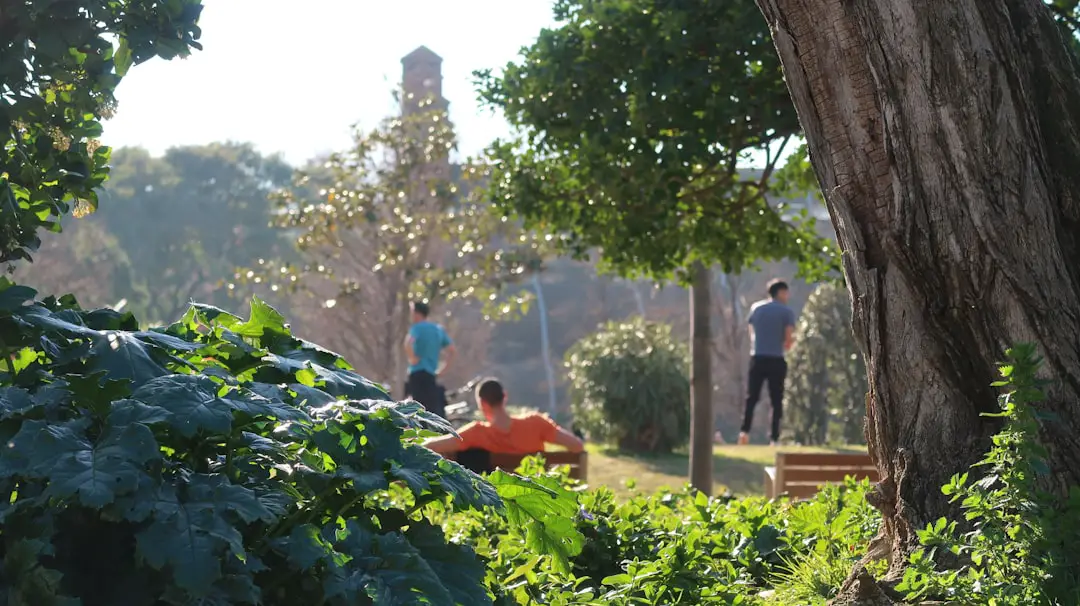
Community gardens aren’t just trendy—they’re time-tested! From ancient civilizations growing communal crops to urban renewal projects in the 1970s, these gardens have always been about people coming together to grow food, friendships, and hope.
A Brief Journey Through Time
- Ancient origins: Early societies in Mesopotamia and Egypt cultivated communal plots to feed their communities.
- Victory Gardens (WWI & WWII): Citizens grew their own food to support war efforts and ease food shortages.
- Urban renewal in the 1970s: Cities like New York saw vacant lots transformed into green oases, combating blight and social isolation.
- Modern resurgence: Today, community gardens are central to urban sustainability, food justice, and social cohesion.
Why History Matters
Understanding this legacy helps us appreciate the power of community gardens as tools for social change. They’re not just about plants—they’re about people, resilience, and reclaiming space.
For more on global impact, check out our article on 12 Global Community Garden Projects Transforming Sustainable Development 🌍 (2025).
🏡 Choosing the Perfect Location for Your Community Garden
Location, location, location! Your garden’s success hinges on picking the right spot. Here’s how to find your garden’s forever home.
What to Look For
- Sunlight: Minimum 6 hours of direct sun daily.
- Water access: Reliable, clean, and affordable irrigation is a must.
- Soil quality: Test for nutrients and contaminants (heavy metals, chemicals).
- Safety: Safe neighborhood with low crime and easy access.
- Accessibility: Close to public transport, parking, and wheelchair-friendly paths.
- Size: Enough space for plots, pathways, and communal areas (a quarter-acre can fit ~35 plots).
- Land ownership: Secure a lease or written agreement for at least 5 years.
Soil Testing and Preparation
Don’t guess—test! Local cooperative extensions or services like Soiltest.com offer affordable kits. If soil is poor or contaminated, raised beds with imported topsoil are your best friends.
Anecdote from Our Gardeners
When we started our first garden, we chose a vacant lot near a community center. The soil was rocky and neglected, but after testing and adding compost, it blossomed into a thriving space. Lesson? Don’t be scared by initial conditions—soil can be revived!
🛠️ 10 Essential Steps to Organize a Thriving Community Garden Project
Ready to roll up your sleeves? Organizing a community garden is a rewarding challenge. Here’s our step-by-step blueprint based on years of experience and best practices from NC State Extension and beyond.
Step 1: Form a Core Planning Team
Gather 3-5 dedicated people passionate about gardening and community building.
Step 2: Define Your Garden’s Purpose
Is it for food production, education, therapy, or entrepreneurship? This shapes everything.
Step 3: Engage Stakeholders
Invite neighbors, local leaders, nonprofits, and potential sponsors.
Step 4: Secure Land and Permissions
Negotiate leases or agreements with landowners; check local zoning and permits.
Step 5: Develop Bylaws and Membership Rules
Clarify plot assignments, maintenance expectations, dues, and conflict resolution.
Step 6: Design the Garden Layout
Plan plots, pathways (minimum 3 feet wide), communal areas, and future expansions.
Step 7: Fundraise and Gather Resources
Apply for grants, host fundraisers, and seek donations of tools, seeds, and materials.
Step 8: Prepare the Site
Clear debris, test soil, build raised beds if needed, and install irrigation.
Step 9: Recruit Gardeners
Advertise via flyers, social media, and community groups.
Step 10: Launch and Celebrate
Host a kickoff event to build excitement and community spirit.
🌿 Selecting Plants and Crops: What Grows Best in Community Gardens?
Choosing the right plants is like setting the menu for a garden feast. The key? Balance ease, yield, and community preferences.
Best Plants for Community Gardens
| Plant Type | Why It’s Great | Tips |
|---|---|---|
| Tomatoes | High yield, popular, and versatile | Use cages or stakes; choose disease-resistant varieties like ‘Celebrity’ |
| Leafy Greens (Lettuce, Spinach) | Fast-growing and nutritious | Succession plant for continuous harvest |
| Herbs (Basil, Parsley, Mint) | Low maintenance, great for cooking | Mint can be invasive—plant in containers |
| Root Veggies (Carrots, Beets) | Store well, easy to grow | Loose soil helps root development |
| Beans and Peas | Nitrogen-fixing, improve soil | Provide trellises for climbing varieties |
| Squash and Zucchini | Prolific producers | Space generously to avoid crowding |
Considerations for Your Community
- Cultural preferences: Ask gardeners what they want to grow.
- Seasonality: Plant crops suited for your climate zone.
- Crop rotation: Prevent soil depletion and pests by rotating families yearly.
For a deep dive, explore our Edible Plants category.
🤝 Building Community Engagement and Volunteer Support
A garden is only as vibrant as its community. Here’s how to cultivate enthusiasm and keep hands in the soil.
Strategies to Boost Engagement
- Host regular meetings: Keep communication open and inclusive.
- Organize workdays: Group planting, weeding, and maintenance build camaraderie.
- Celebrate milestones: Harvest festivals, potlucks, and garden tours.
- Offer workshops: Teach gardening skills, composting, or cooking classes.
- Leverage social media: Share photos, stories, and upcoming events.
- Partner with local schools and nonprofits: Tap into youth and volunteer networks.
Our Story
At Community Gardening™, we once struggled with volunteer drop-off. Introducing monthly themed events—like “Tomato Tasting” and “Compost 101”—rekindled excitement and doubled participation!
💧 Sustainable Gardening Practices: Watering, Composting, and Soil Health
Sustainability is the heartbeat of community gardens. It keeps your garden green and your conscience clear.
Watering Wisely
- Use drip irrigation or soaker hoses to minimize evaporation.
- Collect rainwater with barrels for irrigation.
- Water early morning or late evening to reduce water loss.
Composting Magic
- Set up communal compost bins for kitchen scraps and garden waste.
- Turn compost regularly to speed decomposition.
- Use finished compost to enrich soil naturally.
Soil Health Tips
- Rotate crops annually to prevent nutrient depletion.
- Add organic matter like leaf mulch or aged manure.
- Avoid synthetic pesticides and fertilizers to protect pollinators and soil microbes.
For more on eco-friendly gardening, check our Garden Design Ideas.
🔧 Tools, Resources, and Brands We Trust for Community Gardening
No garden thrives without the right tools! Here’s our rating table for must-have gear, based on design, functionality, durability, and affordability.
| Tool | Design (1-10) | Functionality (1-10) | Durability (1-10) | Overall (1-10) | Recommended Brand |
|---|---|---|---|---|---|
| Garden Trowel | 9 | 10 | 8 | 9 | Fiskars |
| Pruning Shears | 8 | 9 | 9 | 9 | Felco |
| Garden Gloves | 7 | 8 | 7 | 7.5 | Bionic |
| Watering Can | 8 | 9 | 7 | 8 | Haws |
| Compost Bin | 7 | 8 | 8 | 7.5 | FCMP Outdoor |
Why These Brands?
- Fiskars: Ergonomic handles and rust-resistant steel make their trowels a gardener favorite.
- Felco: Swiss precision pruning shears that last decades.
- Bionic: Gloves designed for comfort and grip, reducing hand fatigue.
- Haws: Classic watering cans with balanced weight and durable materials.
- FCMP Outdoor: Affordable, easy-to-use compost bins perfect for community use.
Pro Tips
- Store tools in a communal shed or locked box to prevent theft.
- Label tools with the garden’s name or logo.
- Encourage gardeners to clean tools after use to extend lifespan.
👉 Shop these trusted brands on:
- Fiskars: Amazon | Fiskars Official Website
- Felco: Amazon | Felco Official Website
- Bionic: Amazon
- Haws: Amazon | Haws Official Website
- FCMP Outdoor: Amazon
📅 Planning Your Garden Calendar: Seasonal Tips and Maintenance
Timing is everything! A well-planned calendar keeps your garden productive and your gardeners happy.
Seasonal Breakdown
| Season | Key Activities | Planting Tips |
|---|---|---|
| Spring | Soil prep, planting cool-season crops (lettuce, peas) | Start seeds indoors for warm-season crops |
| Summer | Watering, pest management, harvesting | Mulch to retain moisture and suppress weeds |
| Fall | Plant cover crops, clean up beds | Prepare soil for winter with compost |
| Winter | Plan next season, maintain tools | Use cold frames or hoop houses for winter crops |
Maintenance Must-Dos
- Regular weeding and pest scouting
- Mulching to conserve moisture and prevent weeds
- Pruning and staking plants as needed
- Monitoring soil moisture and adjusting watering schedules
💡 Creative Ideas to Make Your Community Garden Stand Out
Want your garden to be the talk of the town? Here are some fun ideas to add flair and function.
Unique Features to Consider
- Themed garden beds: Pollinator-friendly, native plants, or cultural heritage crops.
- Art installations: Murals, sculptures, or painted signs by local artists.
- Children’s garden: Raised beds or sensory gardens designed for kids.
- Outdoor classroom: Space for workshops and school visits.
- Compost art: Turn compost bins into colorful, educational displays.
- Garden library: Little free library with gardening books and seed swaps.
Our Favorite Community Garden Story
One garden we worked with created a “Storytelling Circle” — a cozy seating area surrounded by fragrant herbs where neighbors share tales and recipes. It became the heart of their garden community!
⚖️ Navigating Legalities, Permits, and Local Regulations
Don’t let red tape wilt your enthusiasm! Understanding legal requirements is crucial.
What to Check
- Land use permits: Contact your city or county planning department.
- Water rights and irrigation regulations: Ensure your water source is legal and sustainable.
- Liability insurance: Some gardens require coverage to protect volunteers and landowners.
- Zoning laws: Confirm the land is zoned for agricultural or community use.
- Pesticide and fertilizer restrictions: Many urban areas limit chemical use.
Helpful Resources
- American Community Garden Association offers guides on legal issues.
- Local cooperative extension offices provide tailored advice.
📈 Measuring Success: How to Track and Celebrate Your Garden’s Impact
How do you know your garden is thriving beyond the plants? Tracking impact helps secure funding and motivates volunteers.
Metrics to Monitor
- Number of active gardeners and volunteers
- Pounds of produce harvested and distributed
- Community events hosted and attendance
- Soil health improvements (via periodic testing)
- Educational workshops held
- Social media engagement and local press coverage
Celebrate Your Wins
- Share stories and photos in newsletters and social media.
- Host annual harvest festivals or awards for “Gardener of the Year.”
- Invite local officials to recognize your garden’s contributions.
🌍 Community Gardens and Urban Food Justice: Making a Difference
Community gardens are powerful tools for food justice, especially in urban “food deserts” where fresh produce is scarce.
How Gardens Help
- Provide affordable, fresh fruits and veggies.
- Empower residents to take control of their food sources.
- Educate on nutrition and sustainable agriculture.
- Build social networks that support vulnerable populations.
Real Impact Example
In Detroit, community gardens have transformed vacant lots into vibrant food hubs, improving health outcomes and creating jobs (source).
🧰 Troubleshooting Common Challenges in Community Garden Projects
Every garden faces hurdles. Here’s how to tackle the usual suspects.
| Challenge | Prevention | Solution |
|---|---|---|
| Weeds | Mulch, clear plot rules, regular weeding | Organize community weed-pulls, educate gardeners |
| Plot abandonment | Clear maintenance expectations, deposits | Reassign plots after notice period |
| Theft | “Help yourself” plots, neighbor watch | Increase signage, community patrols |
| Conflict between gardeners | Written bylaws, open communication | Mediation meetings, leadership intervention |
| Vandalism | Fencing, community events, signage | Repair quickly, involve police if needed |
🎉 Hosting Events and Workshops to Boost Garden Participation
Events are the secret sauce to a lively garden! Here’s how to make yours unforgettable.
Event Ideas
- Seed swaps and plant sales
- Composting and organic pest control workshops
- Cooking demos using garden produce
- Garden art and craft days
- Seasonal festivals (spring planting, fall harvest)
- Storytelling and music nights
Tips for Success
- Promote widely via flyers, social media, and local media.
- Partner with local businesses and nonprofits for sponsorships.
- Make events family-friendly and accessible.
- Use events to recruit new members and volunteers.
For inspiration, visit our Community Garden Events page.
📚 Recommended Books, Websites, and Organizations for Gardeners
Want to become a community garden guru? Here are our top picks.
| Resource Type | Name | Description | Link |
|---|---|---|---|
| Book | The Community Garden Book by Ben Raskin | Comprehensive guide on starting and managing gardens | Amazon |
| Website | American Community Garden Association | Resources, forums, and advocacy | communitygarden.org |
| Organization | National Gardening Association | Educational programs and grants | garden.org |
| Book | All New Square Foot Gardening by Mel Bartholomew | Space-efficient gardening techniques | Amazon |
| Website | Local Cooperative Extension | Localized gardening advice and soil testing | Search your state extension office |
🔍 FAQ: Your Burning Questions About Community Garden Projects Answered
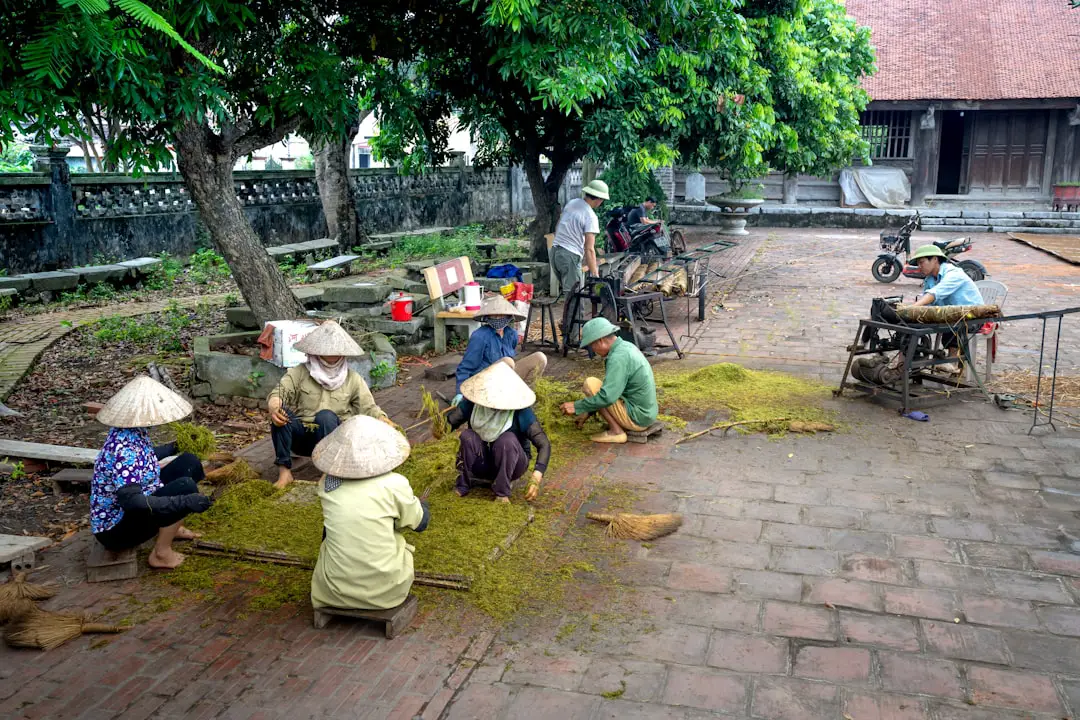
Q: How much space do I need for a community garden?
A: A quarter-acre can fit about 35 family-sized plots (10×20 ft each), plus pathways and communal areas.
Q: Can I start a garden on city-owned land?
A: Yes, but you’ll need permission and often a lease or agreement. Check with your city’s parks or planning department.
Q: How do I handle conflicts between gardeners?
A: Establish clear bylaws, encourage open communication, and have a mediation process.
Q: What if the soil is contaminated?
A: Use raised beds with clean soil or remediate the soil with professional help.
Q: How do I fund my community garden?
A: Grants, local government programs, fundraising events, and donations are common sources.
For more FAQs, explore our Community Garden Policies section.
(Content to follow)
🏁 Conclusion: Growing Together for a Greener Tomorrow
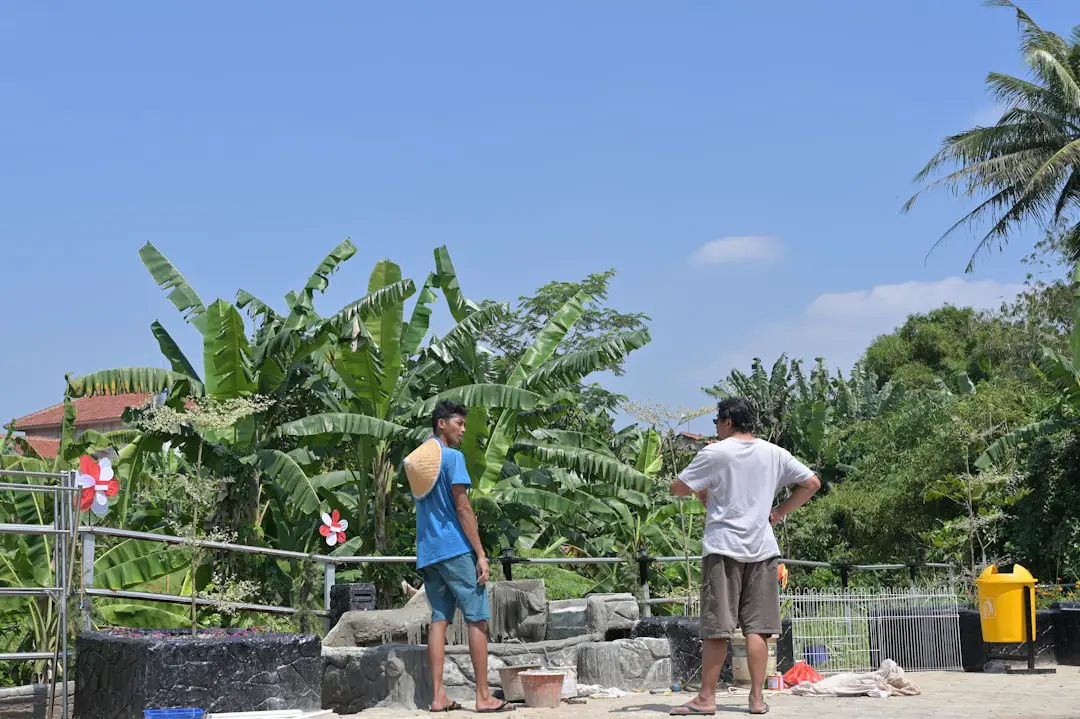
Wow, what a journey! From the humble seed of an idea to a flourishing community garden, you now have the roadmap to create a space that nourishes not just plants, but people and neighborhoods. We’ve covered everything—from choosing the perfect patch of earth to navigating legal hoops, from selecting crops to sparking community spirit. Remember, community gardening is as much about growing relationships as it is about growing food.
Our personal experience at Community Gardening™ has shown that the magic happens when you combine clear planning, passionate people, and a dash of creativity. Whether you’re transforming a vacant lot or starting a school garden, the key is to keep your community engaged, your soil healthy, and your vision inclusive.
If you’re wondering about tools and brands, our trusted favorites like Fiskars, Felco, and FCMP Outdoor gear will serve you well—durable, ergonomic, and garden-tested. And don’t forget to celebrate your garden’s milestones with events and stories that bring everyone together.
So, are you ready to get your hands dirty and your community growing? We’re confident you are! 🌻
🔗 Recommended Links to Kickstart Your Community Garden Journey
Here are some of our top picks to equip your garden and inspire your team:
- Fiskars Garden Trowel: Amazon | Fiskars Official Website
- Felco Pruning Shears: Amazon | Felco Official Website
- Bionic Garden Gloves: Amazon
- Haws Watering Can: Amazon | Haws Official Website
- FCMP Outdoor Compost Bin: Amazon
Recommended Books:
- The Community Garden Book by Ben Raskin: Amazon
- All New Square Foot Gardening by Mel Bartholomew: Amazon
🔍 FAQ: Your Burning Questions About Community Garden Projects Answered
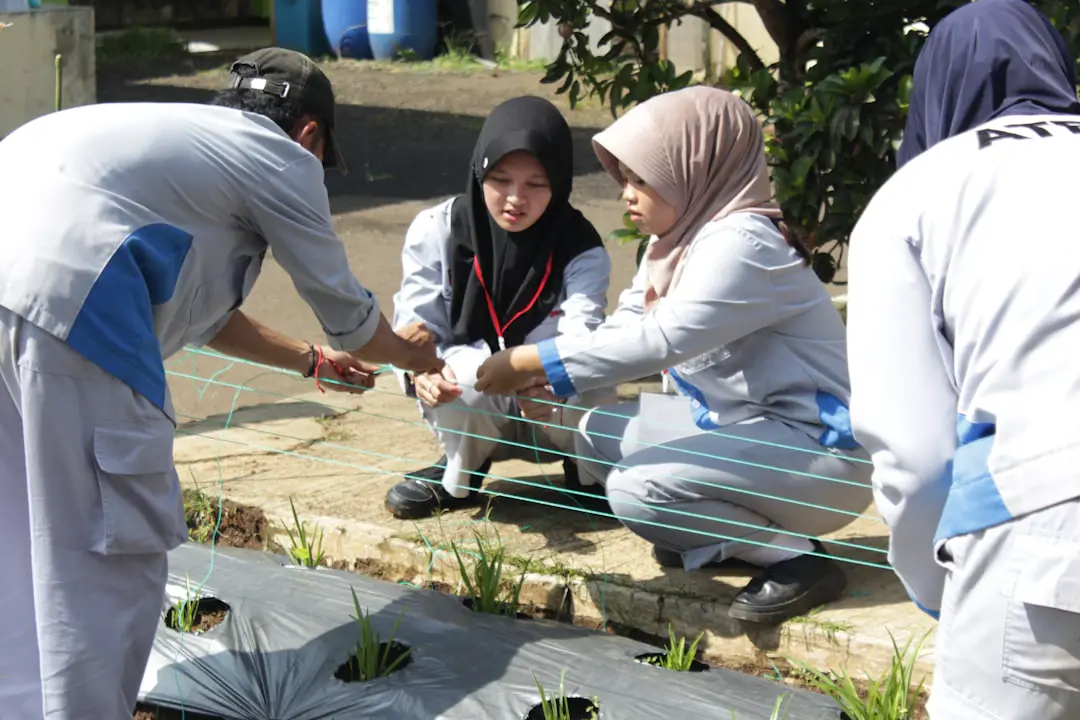
What are the benefits of starting a community garden project in my neighborhood?
Community gardens offer a bouquet of benefits—from improving local food security and boosting mental and physical health to beautifying neighborhoods and reducing crime. They foster environmental stewardship by promoting sustainable practices like composting and water conservation. Plus, they’re social hubs where neighbors connect, share knowledge, and build trust. Studies show that community gardens can even increase nearby property values and reduce urban heat islands. In short, they’re green engines for healthier, happier, and more resilient communities.
Read more about “21 Steps to the Ultimate Community Garden Project Description 🌱 (2025)”
How do I organize and manage a community garden to ensure its long-term success?
Long-term success hinges on strong leadership, clear rules, and community buy-in. Start with a committed planning team and develop bylaws that outline membership, plot assignments, maintenance duties, and conflict resolution. Secure land with a lease or agreement and ensure access to water and sunlight. Regular communication, transparent decision-making, and inclusive events keep gardeners engaged. Don’t forget to plan for funding through grants, donations, or dues. Finally, be flexible—adapt your management as your garden and community evolve.
What are some creative ways to engage and involve local residents in a community garden project?
Creativity is your secret weapon! Host themed events like seed swaps, cooking demos, or garden art days. Create spaces for children, such as sensory or storytelling gardens. Use social media to share stories and photos that inspire pride and participation. Partner with schools, nonprofits, and local businesses to expand your reach. Offering workshops on composting or organic pest control educates and empowers gardeners. Remember, the more fun and inclusive your garden feels, the more it will thrive.
How can a community garden project be used as a tool for building social connections and fostering community relationships?
Community gardens are living social networks. They bring together people of all ages, backgrounds, and abilities around a shared purpose. Working side-by-side cultivates trust, empathy, and cooperation. Garden events create opportunities for storytelling, cultural exchange, and celebration. Gardens can also serve as safe spaces for marginalized groups and foster intergenerational learning. By nurturing plants, you nurture relationships that strengthen the social fabric of your neighborhood.
How do I handle soil contamination concerns in urban community gardens?
Urban soils can harbor contaminants like lead or heavy metals. The best practice is to test your soil through local extension services or certified labs. If contamination is detected, use raised beds filled with clean, imported soil and avoid planting root vegetables directly in contaminated ground. Mulching and adding organic matter can reduce dust and exposure. Educate gardeners on safe gardening practices and consider partnering with environmental organizations for support.
What are effective strategies for preventing and managing conflicts among community gardeners?
Conflicts often arise from unclear expectations or resource competition. Prevention starts with clear bylaws and open communication. Establish plot boundaries, maintenance schedules, and rules on pesticide use upfront. Encourage gardeners to voice concerns early and hold regular meetings to foster transparency. For disputes, mediation by garden leadership or a neutral party helps find fair solutions. Remember, a garden thrives on cooperation—nurture that spirit!
Read more about “Why Community Gardens Don’t Work: 13 Surprising Reasons You Need to Know … 🌱”
📖 Reference Links and Further Reading
- How to Organize a Community Garden | NC State Extension Publications — Comprehensive guide on garden planning and management.
- American Community Garden Association Resources — Tools and advocacy for community gardens.
- CDC on Community Gardens and Health — Health benefits of community gardening.
- Soil Testing Services — For accurate soil analysis.
- Fiskars Official Website — Trusted garden tools.
- Felco Official Website — Premium pruning shears.
- Haws Official Website — Durable watering cans.
- FCMP Outdoor Official Website — Composting solutions.
Ready to grow your community garden project into a blooming success? Remember, every great garden starts with a single seed—and a whole lot of heart. Happy gardening! 🌻


